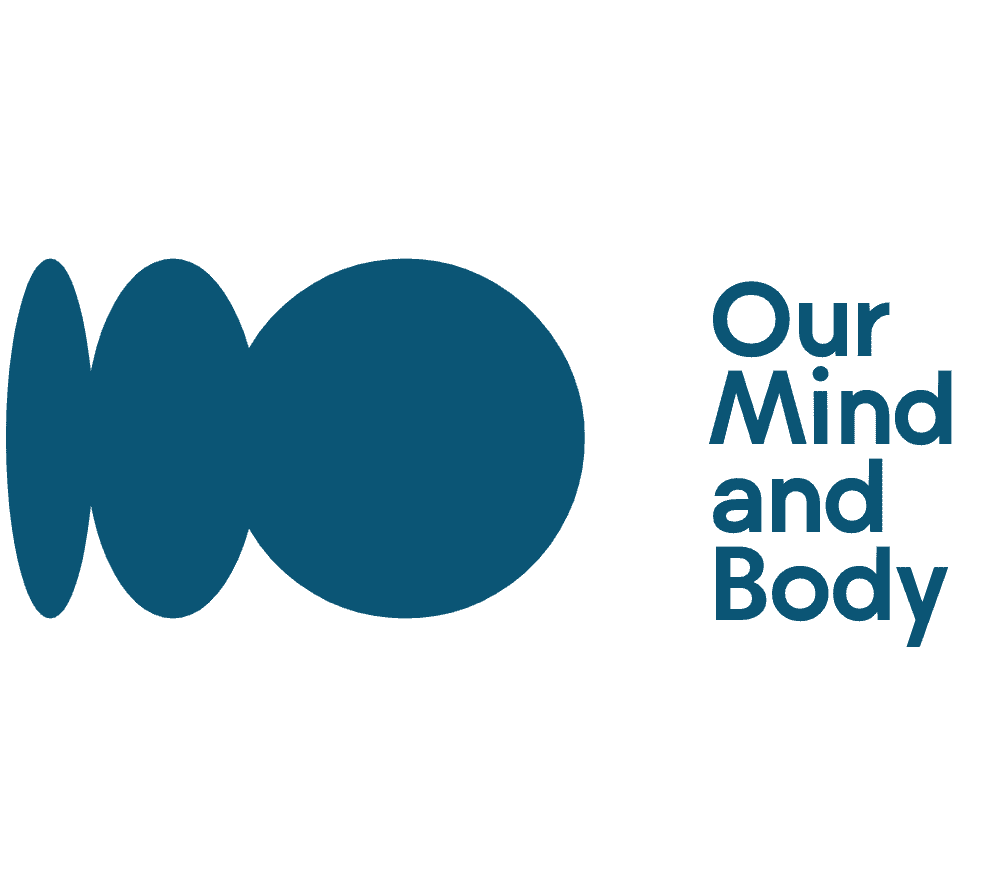Personal Growth
Navigating Life’s Obstacle Course: Identifying Stress Triggers for a More Balanced Life

Life can sometimes feel like navigating through an obstacle course, where we face different challenges along the way. Identifying the sources of stress in our lives can be tricky, but with determination and effort, it is possible to pinpoint their causes.
One of the first steps towards reclaiming more time for yourself during the day is recognizing warning signs that indicate when too much stress has been placed onto one’s shoulders. This could mean discovering how certain activities or obligations make us feel overwhelmed and frustrated, as well as acknowledging which factors cause us to become overly anxious or fatigued.
Taking note of such signs helps us figure out where we should allocate more attention and resources within our daily schedules. By becoming aware of what contributes most heavily to our levels of stress, we can begin taking steps toward prioritizing and delegating tasks accordingly.
Prioritizing And Delegating Tasks
Now that you’ve identified the stressors in your life, it’s time to prioritize and delegate tasks so that you can reclaim more of your valuable time. To make this happen, here are some helpful strategies:
- Understand what is important to you and focus on those things first.
- Learn how to say “no” without feeling guilty or obligated.
- Delegate certain tasks to other people who may be able to do them better or faster than yourself.
- Make a list of all the tasks that need completing and break them down into small manageable chunks.
- Utilize technology for help with automating tedious processes and look into time-saving shortcuts.
Prioritizing and delegating tasks doesn’t have to be overwhelming if done correctly. Start by setting realistic goals for each task – low-priority items don’t necessarily have to get done right away but should eventually be addressed when there is more free time available. Don’t forget about self-care either; taking breaks throughout the day will help keep your energy levels up and ensure everything gets completed efficiently! By following these steps, you’ll soon find yourself reclaiming more of your precious time during the day while still managing to cope with life’s challenges.
Setting Boundaries
Setting boundaries is essential for taking back control of our lives. It can be difficult to know how and when to set limits, especially if we’re used to putting others’ needs first. But learning to be assertive and say no can help us reclaim more of our time during the day. Time management plays an important role in this process. By setting firm boundaries around our personal space and interactions with people, we create a safe zone where we don’t have to feel overwhelmed or taken advantage of.
It’s also important that we practice self-care activities throughout the day so that we stay energized and healthy mentally as well as physically. Taking regular breaks, eating nourishing meals, getting enough sleep, exercising regularly – these are all great ways to keep ourselves feeling balanced and relaxed even when life gets hectic. Scheduling time each day for activities like yoga or meditation will ensure that there’s always something calming on the horizon that you can look forward to doing.
Scheduling Time For Self-Care Activities
It’s no secret that life can be challenging at times. But, if you want to cope with those challenges effectively and come out stronger, it’s critical to make time for yourself each day. After all, investing in your own well-being is the key to improving your overall quality of life!
When scheduling time for self-care activities, don’t forget that taking care of your mind and body isn’t just a luxury—it’s a necessity. Incorporate some stress relief into your daily routine by making use of relaxation techniques like yoga or deep breathing exercises. Also remember to practice mindful self-reflection; this will help you gain insight into what drives your emotions and decisions. And when it comes to being productive during the day, effective time management habits are essential for organizing tasks and obligations so there’s still room for fun activities as well.
Self-care doesn’t have to take up lots of extra hours from your day either – even with small efforts such as getting enough sleep or setting aside five minutes to meditate can go a long way towards helping you stay balanced and centered throughout the week. So make sure you prioritize these activities, allowing yourself plenty of opportunities to recharge and refresh on a regular basis. Doing so will give you more energy to tackle whatever life throws at you—and we could all do with more resilience right now! Ready to start releasing emotional baggage? Let’s dive in…
Releasing Emotional Baggage
Releasing emotional baggage can be a difficult and challenging process, but it is an essential part of making space in our lives to cope with life’s challenges. When we take the time to identify negative thoughts or feelings that are weighing us down, we open ourselves up to the possibility of finding freedom from them. This often begins with self-awareness – recognizing when you’re feeling overwhelmed by emotion and understanding why those emotions have arisen. Once this awareness has been achieved, then it’s time to explore various coping strategies for releasing the burden of these feelings.
One such strategy is to practice letting go – learning how to accept what cannot be changed rather than dwelling on it. Acknowledging that some things simply cannot be controlled can help us move forward without carrying regrets or resentments around with us all day long. Similarly, allowing ourselves permission to express painful emotions in healthy ways can also make a difference in terms of mental clarity and personal growth. Whether through journaling, talking with friends, or engaging in activities like yoga or meditation, giving yourself permission to release pent-up emotions can create more inner peace and balance over time.
By taking intentional steps towards releasing your emotional baggage each day, you will start reclaiming more of your time during the day while creating an atmosphere for relaxation and renewal. This could involve anything from setting aside 10 minutes each morning for mindful reflection or dedicating an hour each evening for creative pursuits; whatever works best for you! Making this kind of regular habit out of releasing emotional baggage will allow you greater capacity for managing future stressors as they arise in life.
Creating An Atmosphere For Relaxation
Life can be incredibly challenging. That’s why it is so important to make time for yourself and create an atmosphere of relaxation in which you can unwind comfortably. With a few simple tips, you can transform your home or office into a calming environment that will help you destress and recharge.
| Tips | Benefits |
|---|---|
| Create soft lighting | Induce a sense of serenity and calmness. |
| Light soothing candles or incense | Help to set the mood for relaxation. |
| Play relaxing music at low volume | Reduce stress levels and promote healing. |
| Add plants to rooms around the house or office space. | Increase oxygen flow throughout the area, creating a peaceful ambience. |
Creating an atmosphere of comfort and ease is essential for helping cope with life’s challenges. Incorporating these elements into your daily routine will not only allow you to relax more deeply, but also provide clarity as well as mental focus necessary for tackling any situation that may arise during the day ahead! To get even greater benefit from this process, try practicing mindful meditation each day—a practice known to reduce stress while increasing both physical health and emotional wellness.
Practicing Mindful Meditation
Mindful meditation is a powerful tool in helping us cope with life’s challenges. With regular practice, we can cultivate inner peace and tranquility by cultivating the quality of mindful awareness that permeates our lives. This involves learning to observe ourselves without judgment or attachment, allowing us to cultivate deeper insight into our thoughts and emotions.
In order to get started with your meditative relaxation practice, there are several techniques you can use. Mindful breathing is one of the most important aspects of mindfulness as it helps bring focus and clarity to each moment. Other popular meditation practices include body scanning, visualization exercises, mantra repetition, walking meditations, yoga nidra (yogic sleep), and loving-kindness meditation. You may find that certain techniques work better for you than others so experiment until you find what works best for you.
By carving out time each day to practice mindful meditation we create space for self-care and healing from within. We also become more aware of our relationship with the present moment which allows us to make more skillful choices in how we respond to challenging situations in life. Taking this time each day will help us stay grounded amidst all of life’s changes while inviting greater ease into our daily experience. As we move through this journey together let’s take some time now to transition into enjoying nature and the outdoors…
Enjoying Nature And The Outdoors
It’s like taking a breath of fresh air – reclaiming your time in the day to explore nature and outdoor activities. Taking time out to appreciate and experience the natural environment can be extremely rejuvenating, while also helping you to manage life’s challenges. Outdoor recreation allows us to connect with our surroundings, soothes stress, provides mental clarity and promotes physical health. Nature walks are an ideal way to relax and clear your head from everyday worries and responsibilities.
Take advantage of opportunities that get you outdoors such as walking through local parks or trails, visiting nearby beaches or lakes, gardening or any other activity that brings you closer to nature. Spending some quality time in natural settings gives us space for reflection and appreciation for the beauty around us. Enjoying nature is both calming and invigorating at once – it helps bring balance back into our lives by providing moments of peace amidst all the chaos we may face daily.
Connecting with friends and family members who share similar interests will only amplify these benefits; not only do they provide companionship but acts as accountability partners when making sure routines become habits! Not only will this help reduce stress levels but strengthen relationships too.
Connecting With Friends And Family
After taking time to enjoy nature and the outdoors, it’s important to also make a conscious effort to connect with friends and family. Receiving support from your loved ones can be a powerful tool in helping you cope with life’s challenges. Making time for family is key in building relationships and strengthening bonds of love with those closest to us. Reaching out to our friends or loved ones may feel like an extra burden at times, but having someone who cares about us can provide invaluable emotional sustenance when we need it most.
Connecting with people doesn’t always have to mean talking on the phone or meeting up face-to-face – even just sending a text message or making a quick call will do wonders for your mental wellbeing. Taking the initiative to reach out shows that you care about them too, which helps establish mutual trust between both parties involved. It’s also important not to forget yourself in this process: take regular breaks throughout the day so you can clear your head and refresh your mind before continuing on with your work or other commitments. This way, you’ll be better equipped emotionally and mentally when facing life’s obstacles head on!
Taking Regular Breaks
Picture yourself as a car, running on the highway of life. Now and then, you need to take regular breaks in order to refuel your tank, recharge your battery and refocus. As cars require maintenance and tune-ups, so do our minds and bodies! Taking regular breaks is an effective way to unwind from daily stressors and reclaim more of your time during the day.
Though taking a break may seem like it’s unnecessary or unproductive at first, it can actually be beneficial for both physical and mental health. It gives us the opportunity to relax away from demanding tasks; allowing us to return with fresh energy and perspective. Studies have even shown that short periods of rest during challenging activities can help improve concentration levels and reduce fatigue.
Incorporating frequent pauses into our daily routines can give us the space we need to clear our heads, rejuvenate ourselves, and reset our moods. So don’t underestimate the power of taking regular breaks throughout the day—it could be just what you need for feeling recharged and ready for whatever life throws at you next!
Frequently Asked Questions
What Are Some Effective Strategies For Managing Stress?
Managing stress can be a difficult task, but it is essential for living a healthy life. There are many effective strategies you can use to help manage your stress and find relief from it. Here are some tips on managing stress that will help you cope with the challenges of everyday life.
One strategy for managing stress is to focus on the present moment and take time out for yourself throughout the day. Taking regular breaks helps us clear our minds, allowing us to stay focused on tasks at hand and better manage any stressful situations we come across. Practicing mindfulness or meditation can also be beneficial in reducing stress levels. It’s important to actively practice relaxation techniques such as deep breathing, stretching, yoga, or journaling when feeling overwhelmed by stressful thoughts or emotions.
It’s also helpful to make sure you get enough sleep each night so you’re well-rested and able to face whatever comes your way during the day with more ease. Eating right and exercising regularly can also do wonders for relieving stress as these activities have been proven to reduce cortisol levels in the body which has a calming effect overall. Additionally, try to include activities in your daily routine that give you joy – anything from going for a walk outside, listening to music, or talking with friends or family members can work wonders in lifting your spirits and helping you feel more relaxed after a long day.
Living an organized lifestyle where commitments are managed efficiently may seem like hard work upfront but this small effort goes a long way towards making life less overwhelming over time. Having good planning skills allows us to plan ahead of time instead of rushing through tasks which leads to increased productivity with fewer negative effects associated with high levels of stress. These few simple steps could become part of an effective approach towards managing stress effectively while reclaiming more of your precious time during the day!
How Can I Make More Time For Myself During The Day?
Making more time for yourself during the day can be an immense challenge. According to a study by Stanford University, the average person spends only 17 minutes per day on self-care activities such as relaxation or leisure activities. That is why it is so important to allocate time for ourselves and set aside time for self-care and relaxation.
The first step in reclaiming your time is assessing how you are currently spending your days. Start with tracking how much of your 24 hour day is spent on different tasks and activities. Once you have this data, pinpoint where you could reduce some of these tasks or replace them with something that will benefit both physical and mental health like taking regular breaks from work, listening to calming music, going for a walk around the block etc. This way, you can ensure that you make more time for yourself each day without compromising other commitments.
Another great strategy to adopt when making more time for yourself is creating boundaries between personal life and professional life. Setting healthy limits helps create balance while also allowing us to prioritize our own needs instead of feeling drained all the time due to being overly committed elsewhere. Additionally, remember that prioritizing yourself doesn’t mean neglecting hobbies or relationships; rather, it means having enough energy left at the end of the day to enjoy them.
When trying out new strategies like organizing daily schedules better or increasing break times throughout the working day – keep track of what works best for you and don’t forget to give yourself credit! Making more time for ourselves requires dedication and hard work but ultimately leads us closer towards living fulfilling lives full of joy and purposeful moments every single day.
What Are Some Techniques I Can Use To Reduce Stress And Anxiety?
Coping with stress and anxiety can be an overwhelming task, but there are techniques you can use to help reduce your stress levels. From relaxation techniques such as mindful breathing and self-care activities, to more structured approaches such as anxiety management and cognitive behavior therapy, here are some tips for managing stress:
- Stress Reduction Activities: Taking time each day to engage in relaxing activities like yoga or meditation is a wonderful way to manage stress. Other activities that have been shown to reduce stress include journaling, listening to music, taking a hot bath or going on a walk.
- Relaxation Techniques: Mindful breathing exercises can be incredibly calming when dealing with high levels of stress. Practicing deep breaths from the diaphragm helps activate the parasympathetic nervous system which promotes feelings of calmness and peace. Additionally, progressive muscle relaxation (PMR) involves tensing then releasing various muscles throughout the body in order to relax them one at a time.
- Anxiety Management Techniques: Cognitive behavioral therapies (CBT) focus on helping individuals better understand how their thoughts affect their emotions and behaviors so they can make positive changes in their lives. This type of therapy also teaches helpful coping strategies for reducing anxious thoughts and behaviors related to stressful situations.
- Self Care Practices: Taking care of yourself is key in managing stress levels effectively over time. Incorporating healthy habits into your daily routine such as getting enough sleep, eating nutritious meals and staying physically active will go a long way towards improving mental wellbeing and preventing further episodes of anxiety or depression down the road.
When it comes to managing stress and anxiety, the best approach is a combination of both short-term solutions like relaxation techniques and long-term interventions such as CBT or lifestyle modifications that promote overall health and wellness. It’s important not only to recognize signs of distress early on but also equip yourself with tools necessary for maintaining emotional balance amidst life’s challenges – allowing you more space to reclaim your time during the day for restorative practices like mindfulness meditation or simply enjoying nature’s beauty around you!
What Are The Benefits Of Taking Regular Breaks?
Are you feeling overwhelmed with the demands of life? It can be hard to manage stress levels and reduce anxiety. Taking regular breaks is one of the best ways to combat this, allowing us to reconnect with ourselves and our loved ones. Here are some benefits of taking regular breaks:
- Improved mental clarity
- Enhanced physical health
- Increased productivity
- Reduced stress levels
As a life coach or professional counselor, I am here to tell you that making time for yourself is essential for leading a purposeful, fulfilling life. Taking regular breaks from your day-to-day tasks allows us to take account of our emotions, reflect on our lives, and recharge before tackling more challenges. This practice can help boost both your mental and physical wellbeing by reducing stress levels and improving clarity of thought in times of difficulty. Additionally, taking regular breaks helps improve productivity as it gives you a chance to regain focus after working on something difficult or tedious for an extended period of time.
From my experience, I have seen how beneficial it can be when we make time to connect with loved ones during these moments away from work or study – whether through talking about shared interests or simply spending quality time together without distractions from technology or other commitments. By doing so, we can create stronger relationships while helping each other cope with life’s challenges! Regularly taking breaks throughout the day has been shown to lead healthier lifestyles overall which will eventually help you achieve your goals faster than if you don’t give yourself any downtime at all.
It’s important not only for our own sake but also those around us that we prioritize self-care every now and then – especially when external pressures become too much to handle alone. So why not start today by scheduling some ‘me’ time into your routine? You won’t regret it!
What Are The Best Ways To Connect With Friends And Family?
Staying connected with friends and family is an important part of life. Having a strong social network can be beneficial in many ways, such as providing emotional support, boosting self-esteem, and strengthening relationships. In order to maintain these connections, it’s essential to take the time out of your day to connect with those who matter most. Here are some tips for connecting with friends and family:
- Reach out regularly – Taking the initiative to reach out will let your loved ones know that you care and want to stay connected. Whether it’s through text, call or video chat, make sure you check in often!
- Make plans together – Making plans ahead of time makes it easier to stick to them. Ask each other what type of activity they would like to do and come up with something fun everyone would enjoy.
- Share stories & experiences – Talking about how your days have been gives people insight into what has been going on in each others’ lives. It also provides an opportunity for laughter which helps strengthen relationships even further!
- Express gratitude – Letting someone know how much their presence means to you goes a long way in building meaningful connections. Doing this frequently shows appreciation for all that they bring into your life.
- Show kindness – Being kind doesn’t require any effort but creates an atmosphere where everyone feels seen and heard. Little gestures like sending thoughtful cards or small gifts help show how much you care without having to say anything at all!
Making time to connect with friends and family should not feel daunting or overwhelming; rather it should be embraced as an opportunity to build stronger bonds with those closest to us while allowing ourselves moments away from our stressful everyday tasks. Connecting with others shouldn’t just happen when we’re feeling down; instead consider taking regular breaks throughout the day whenever possible so that we don’t miss out on opportunities for meaningful conversations and lasting memories!
Conclusion
When life throws us a curveball, it’s easy to feel overwhelmed and stressed. But if we make the effort to reclaim some of our time during the day for ourselves, it can have huge benefits in terms of managing stress and anxiety. Taking regular breaks from your daily routine will help you relax and reconnect with friends and family. Finding effective strategies that work for you is key to successfully coping with life’s challenges.
By taking control over how much time you dedicate to yourself each day, you are actively working on becoming stronger mentally and emotionally. This isn’t just about finding fleeting moments of peace; this is about carving out long-term practices that enable you to better manage your feelings when faced with difficult situations or challenging times. It’s important to remember that there is no one-size-fits all approach here – what works best for someone else might not be right for you, so take the time to explore different techniques until you find the ones that fit into your lifestyle.
So don’t let life get the best of you! By making self-care a priority, investing in simple habits such as setting aside an hour each day away from screens and distractions, meditating regularly, or even having lunch dates with your closest friends – these small steps can reap big rewards in terms of helping cope with life’s challenges more effectively. As they say: “A journey of a thousand miles begins with a single step” – so why not start today?
Meet Kalinda, the passionate and visionary Editor-in-Chief of OurMindAndBody.com. Kalinda is a beacon of light in the realm of holistic well-being, and her mission is to positively impact the lives of others by inspiring them to embrace a healthier and more fulfilling lifestyle.
With a deep-rooted love for meditation, yoga, and spirituality, Kalinda’s journey toward self-discovery and personal growth started at a young age. She found solace and strength in these practices, which not only helped her cope with the challenges of life but also provided her with a profound sense of purpose. Eager to share the transformative power of these ancient disciplines, Kalinda embarked on a path to spread awareness and understanding.
Personal Growth
The Spiritual Significance Of Shooting Stars: Meaning And Symbolism

Have you ever gazed up at the night sky and witnessed a meteor streaking through the darkness? It’s a moment that mesmerizes us and fills us with wonder and awe.
Shooting stars, both scientifically and spiritually, hold a profound significance. Scientifically, they provide valuable insights into the history and composition of our universe.
But beyond the realm of science, shooting stars carry a deeper, more spiritual meaning. In this article, we will explore the spiritual significance of shooting stars, delving into their symbolism and the profound impact they can have on our lives.
Key Takeaways
- Seeing a shooting star spiritually is believed to bring good luck and positive energy
- Many cultures associate shooting stars with messages from the spiritual realm or the universe
- Shooting stars are often interpreted as a sign of new beginnings or endings
- Symbolic meanings of shooting stars include new ideas, wishes, dreams, and spiritual journeys
What are shooting stars?
I’ve learned that shooting stars are natural phenomena caused by debris from space entering the Earth’s atmosphere, and they burn up, creating a bright streak of light across the sky.
It’s fascinating to think about the mythological origins and cultural beliefs surrounding shooting stars. In many cultures, they are seen as messages from the spiritual realm or the universe. Some believe that seeing a shooting star spiritually brings good luck and positive energy, while others associate them with new beginnings or endings.
The symbolic meanings attached to shooting stars can vary widely, depending on individual perspectives and cultural beliefs. For some, they represent wishes, dreams, and spiritual journeys. Others may see them as signs of transformation, growth, or even bad luck.
Regardless of the interpretation, witnessing a shooting star always leaves a lasting impression, igniting a sense of wonder and awe in those fortunate enough to see one.
Scientific explanation
Astronomers study shooting stars using telescopes and instruments to provide a scientific explanation for the phenomenon. Through the exploration of shooting stars, scientific research on shooting stars has revealed fascinating insights into the celestial world. Here are four key findings:
-
Understanding celestial body movement and composition: By studying shooting stars, scientists gain valuable knowledge about how celestial bodies move and their composition. This research helps piece together the history of our Solar System.
-
Insights into the formation of celestial bodies: Analyzing the fallen meteors from shooting stars allows scientists to determine the age and make-up of the Solar System. This information provides valuable insights into the formation of celestial bodies.
-
Unveiling the evolution of the Solar System: Meteor composition analysis sheds light on the evolution of the Solar System. By studying shooting stars, scientists can understand the presence of certain elements in space and gain a deeper understanding of the Solar System’s evolution.
-
Enhancing appreciation for the phenomenon: Understanding the scientific explanation behind shooting stars enhances our appreciation for this awe-inspiring phenomenon. It allows us to marvel at the beauty of shooting stars while also acknowledging the immense knowledge that scientific research has provided.
Regular occurrence
During meteor showers, I love to search for shooting stars in the night sky. It’s a magical experience that fills me with wonder and awe. To make the most out of these celestial events, it’s important to know the meteor shower dates and the best locations for stargazing. Meteor showers happen regularly throughout the year, with the Perseids meteor shower being one of the most well-known, occurring in August. But there are many other meteor showers that take place annually, each with different levels of activity. To increase your chances of seeing shooting stars, find a location away from city lights for better visibility and choose a spot with an unobstructed view of the sky. By being patient and allowing your eyes to adjust to the darkness, you can fully immerse yourself in the beauty of these shooting stars.
Importance of meteor composition analysis
Analyzing the composition of fallen meteors is crucial for understanding the age and make-up of the Solar System. Meteor shower analysis provides valuable insights into the formation of celestial bodies and the evolution of our Solar System.
By studying the chemical composition of these fallen meteors, scientists can unravel the mysteries of our planetary system. It reveals information about the presence of certain elements in space and helps piece together the story of celestial body formation.
This analysis not only enhances our understanding of the Solar System but also deepens our appreciation for the beauty and complexity of the universe. It is through the study of meteor composition that we gain a glimpse into the vastness and wonder of the cosmos, igniting a sense of inspiration and awe within us.
Tips for observing
To enhance your experience of observing shooting stars during meteor showers, it is helpful to find a location away from city lights for better visibility. The best locations for stargazing are usually in remote areas where light pollution is minimal. Choose a spot with an unobstructed view of the sky to maximize your chances of seeing shooting stars.
It’s also important to be patient and allow your eyes to adjust to the darkness. Additionally, if you’re interested in capturing the beauty of shooting stars through photography, there are a few tips to keep in mind. Use a tripod to keep your camera steady, set a wide aperture to let in more light, and use a long exposure to capture the movement of the shooting stars.
With these tips, you can fully immerse yourself in the awe-inspiring experience of witnessing shooting stars during meteor showers.
Positive spiritual beliefs
Experiencing a shooting star fills me with a sense of positivity and brings a feeling of good luck and possibility. It’s as if the universe is sending a message of encouragement and reminding me of the infinite potential within myself.
When I see a shooting star, I take a moment to reflect and express gratitude for the blessings in my life. I then set positive intentions for the future and visualize my dreams and desires manifesting into reality. This act of manifestation is a powerful spiritual practice that helps me stay focused on my goals and allows me to attract the positive energy needed to achieve them.
It’s a reminder that I have the power to create my own destiny and that the universe is conspiring in my favor. So, the next time you witness a shooting star, take a moment to embrace its positive energy and utilize it as a catalyst for your own personal growth and transformation.
Negative spiritual beliefs
When I witness a shooting star, it fills me with a sense of unease and foreboding, as if it is a sign of impending doom or misfortune. In many cultures, shooting stars are associated with negative meanings and superstitions. Some believe that seeing a shooting star is a symbol of death or a bad omen. These beliefs stem from ancient superstitions and cultural interpretations passed down through generations. The idea of a shooting star representing the end of something or a warning of impending tragedy can be deeply ingrained in our subconscious. This negative symbolism attached to shooting stars serves as a reminder to cherish the present moment and appreciate the blessings in our lives. It encourages us to reflect on our actions and make positive changes to avoid any potential negative outcomes.
| Negative Symbolism | Superstitions about Shooting Stars |
|---|---|
| Death | A sign of impending tragedy |
| Misfortune | Bad luck associated with shooting stars |
| Omen | A warning of negative events |
| Impending doom | A sense of foreboding and unease |
Reflection and gratitude
After witnessing a shooting star spiritually, it is natural to be filled with a sense of wonder and awe. The beauty and fleeting nature of these celestial phenomena leave a lasting impression on our hearts and minds.
As I reflect on the spiritual significance of shooting stars, I am reminded of the importance of gratitude in our lives. Taking a moment to pause and appreciate the magic that unfolds before us can be a powerful spiritual practice. It allows us to connect with the universe and acknowledge the infinite possibilities that exist.
Expressing gratitude for the opportunity to witness such a breathtaking sight opens our hearts and minds to the abundance of blessings that surround us. In these moments of reflection and gratitude, we align ourselves with the positive energy of the universe, inviting more miracles and blessings into our lives.
Cultural interpretations
Cultural interpretations of shooting stars vary widely, with different belief systems attributing various messages and events to their appearance. Throughout history, these celestial phenomena have held immense cultural significance, captivating the imaginations of people from all walks of life.
Here are a few examples of how different cultures have interpreted the spiritual meaning of shooting stars:
-
In ancient Greek mythology, shooting stars were seen as a sign of divine favor or displeasure. They were believed to be the souls of deceased loved ones, guiding and protecting those who witnessed them.
-
Native American tribes viewed shooting stars as communication from the spirit world. They believed that these celestial visitors brought messages from ancestors or spirit guides, offering guidance and wisdom.
-
In Chinese culture, shooting stars are associated with luck and prosperity. It is believed that making a wish upon a shooting star can bring good fortune and help manifest one’s desires.
-
In Hinduism, shooting stars are seen as a symbol of transformation and the cycle of life. They represent the journey of the soul and the potential for spiritual growth and enlightenment.
These cultural interpretations highlight the deep-rooted historical significance of shooting stars and the diverse ways in which they have been understood and revered. They remind us of the interconnectedness of humanity and the universal human desire to find meaning in the natural world.
Symbolic representations
As I delve deeper into the spiritual significance of shooting stars, I can’t help but marvel at the myriad of symbolic representations attached to these celestial wonders.
Beyond cultural interpretations, shooting stars hold a profound connection to astrology and spiritual rituals. They are seen as celestial messengers, carrying messages from the universe to guide us on our spiritual paths.
Many spiritual rituals involve making wishes or setting intentions when a shooting star streaks across the night sky, believing that these desires will manifest into reality. The fleeting nature of shooting stars reminds us to cherish the present moment and seize opportunities for growth and transformation.
They ignite a sense of wonder and awe, inspiring us to pursue our dreams and aspirations. In this vast universe, shooting stars serve as spiritual beacons, reminding us of the infinite possibilities that await us on our journey.
Inspiration and motivation
Experiencing a shooting star ignites a deep sense of inspiration and motivation within me. It reminds me of the infinite possibilities that exist in the universe and the power of our dreams and aspirations. When I gaze upon a shooting star, I am reminded of the importance of finding purpose and pursuing our true passions in life. It serves as a gentle nudge from the universe, encouraging me to take action and follow my heart’s desires. The shooting star represents the fleeting nature of life and the importance of seizing every moment. It reminds me to never give up on my dreams, no matter how big or small they may be. Witnessing a shooting star fills me with a sense of wonder and awe, and it reinforces my belief in the beauty and magic of the world around us.
| Finding Purpose | Pursuing Dreams |
|---|---|
| – Shooting stars remind us of the importance of finding our purpose in life. | – They inspire us to pursue our dreams and aspirations. |
| – They serve as gentle reminders to follow our hearts and do what truly makes us happy. | – Shooting stars symbolize the infinite possibilities that exist in the universe. |
| – The fleeting nature of shooting stars reminds us to seize every moment and make the most of our lives. | – They encourage us to take action and not be afraid to chase after our dreams. |
| – Witnessing a shooting star sparks a sense of motivation and reminds us of the beauty and magic of the world. | – They reinforce our belief that anything is possible if we have the courage to pursue it. |
Magical and enchanting experience
The sight of a shooting star creates a mesmerizing and enchanting moment that captivates my senses. As I gaze at the night sky, a shooting star streaks across the darkness, leaving behind a trail of shimmering light.
In that fleeting instant, I feel a deep sense of connection with the universe, as if the vast expanse of space is reaching out to touch my soul. It is a reminder of the infinite possibilities that exist in the universe and within myself.
The magical nature of shooting stars ignites a spark within me, awakening my spirit and inspiring me to embrace my own journey of self-discovery. In that brief encounter with the shooting star, I am reminded to stay true to my path, to follow my dreams, and to trust in the power of the universe to guide me towards my highest purpose.
Frequently Asked Questions
Are shooting stars actually stars?
No, shooting stars are not actually stars. They are debris from space, such as meteoroids, that enter the Earth’s atmosphere and burn up, creating a bright streak of light across the sky.
Can shooting stars grant wishes?
Shooting stars have captivated human imagination for centuries, with magical folklore suggesting they can grant wishes. While scientific explanations reveal their true nature, the idea of wishes coming true adds a sense of wonder and hope to the experience.
What do shooting stars symbolize in different cultures?
Cultural interpretations of shooting stars vary widely, reflecting the diverse beliefs and historical significance of different cultures. They can symbolize new beginnings, messages from the spiritual realm, hope, and inspiration, among other concepts.
Are there any negative beliefs associated with shooting stars?
Witnessing a shooting star can be a breathtaking experience, but there are some negative beliefs associated with them. Some cultures view shooting stars as omens of death or bad luck, which can have a disheartening effect on those who witness them.
How can witnessing a shooting star impact someone’s spiritual journey?
Witnessing a shooting star can have a profound impact on my spiritual journey. It reminds me of the vastness of the universe and my connection to it. It inspires personal growth, ignites a sense of wonder, and encourages me to pursue my dreams.
Conclusion
As I gaze up at the night sky, witnessing the fleeting beauty of a shooting star, I am reminded of the profound spiritual significance that these celestial wonders hold. They are more than just natural phenomena; they are messengers from the universe, igniting a sense of wonder and hope within our souls.
Like the shooting star that streaks across the darkness, we too have the power to leave a lasting impression and inspire others with our dreams and aspirations. Just as the shooting star lights up the night sky, let us illuminate our own paths and embrace the magic and enchantment of life’s journey.
Say hello to Cypress, the soulful wordsmith behind the insightful articles at OurMindAndBody.com. Cypress is a gifted writer who weaves words with grace and precision, using language as a powerful tool to inspire, heal, and uplift the spirits of readers.
With a background in literature and a passion for personal growth, Cypress brings a unique perspective to the world of well-being and spirituality. Having experienced the transformative effects of meditation and yoga firsthand, Cypress is deeply connected to the essence of these practices and their potential to enrich lives.
Personal Growth
The Spiritual Significance Of The Name James

Did you know that the name James has deep spiritual significance? Coming from Hebrew, meaning ‘supplanter’ or ‘holder of the heel,’ the name James represents persistence, courage, and the skill to overcome obstacles.
Numerologically, it carries a value of 11, symbolizing leadership and spiritual enlightenment. Astrologically aligned with Mars, it embodies courage and assertiveness. The symbolic significance of its letters further reveals optimism, sensitivity, and intuition.
Additionally, James is associated with reliability, loyalty, and leadership, offering protection and guidance in various cultures.
Join me as we explore the profound spiritual meaning of the name James.
Key Takeaways
- The name James has a spiritual meaning of persistence, courage, and overcoming obstacles.
- Numerologically, the name James has a value of 11, indicating leadership qualities and spiritual enlightenment.
- Astrologically, the name James corresponds with the planet Mars, symbolizing courage and assertiveness.
- The letters in the name James, such as J and S, hold symbolic significance, representing optimism, excitement, sensitivity, and intuition.
Origin and Meaning
The origin and meaning of the name James is quite fascinating. It is derived from the Hebrew name Yaakov, which means supplanter or holder of the heel.
In a spiritual context, the name James represents someone who is persistent, courageous, and willing to overcome obstacles.
This name holds great significance in numerology and astrology as well. Numerologically, James has a numerical value of 11, indicating leadership qualities and spiritual enlightenment. Astrologically, the name corresponds with the planet Mars, signifying courage and assertiveness.
The symbolic significance of the letters in James adds depth to its meaning. The J represents optimism and excitement for life, while the S signifies sensitivity and intuition.
Overall, the name James carries a powerful spiritual meaning. It reflects qualities of strength, determination, and the ability to rise above challenges.
Numerological Symbolism
Numerology unveils the captivating power behind the numeric value of my name, as the number 11 ignites a blazing trail of leadership and spiritual enlightenment. This numerical value signifies my innate ability to lead and inspire others, as well as my deep connection to the spiritual realm.
I am driven by a strong sense of purpose and a desire to make a positive impact on the world. The number 11 also represents spiritual enlightenment, indicating that I am constantly seeking higher truths and wisdom.
It is through my leadership qualities and dedication to spiritual growth that I am able to navigate the challenges and obstacles that come my way. Numerology allows me to understand and embrace the profound significance of my name, James, as it illuminates the path of my life journey.
Astrological Associations
Astrologically speaking, Mars represents my courage and assertiveness, providing me with the strength to face challenges head-on. In numerology, the name James corresponds with the numerical value of 11, indicating my leadership qualities and spiritual enlightenment.
This celestial connection allows me to tap into my innate sense of determination and fearlessness. As a result, I am able to navigate through life’s obstacles with unwavering resolve.
The position of each letter in my name holds symbolic significance as well. The J signifies my optimism and excitement for life, while the S represents my sensitivity and intuition. These qualities, combined with the influence of Mars, shape my life journey and contribute to my character.
The name James, with its spiritual meaning of persistence and courage, serves as a constant reminder of my ability to overcome any challenge that comes my way.
Symbolic Significance of Letters
In understanding the symbolic significance of letters in my name, I find that the J represents my optimism and excitement for life, while the S signifies my sensitivity and intuition.
The letter J is associated with the planet Jupiter, which symbolizes expansion and growth. This resonates with my personality as I always strive for personal and spiritual development.
The S, on the other hand, correlates with the moon, representing emotions and intuition. I am highly empathetic and intuitive, often relying on my instincts to guide me in making decisions.
Understanding these symbolic meanings of the letters in my name gives me a deeper insight into my life journey and the qualities that define me. It allows me to embrace and cultivate these qualities, leading to a more fulfilling and purposeful existence.
Biblical References
When exploring the biblical references associated with my name, I feel a deep connection to the stories of James the son of Zebedee and James the son of Alphaeus, as they exemplify the strength and resilience required to navigate life’s challenges.
James the son of Zebedee was one of the twelve apostles chosen by Jesus, and he played a significant role in spreading the teachings of Christianity. He was known for his unwavering faith and commitment, even in the face of persecution and adversity.
James the son of Alphaeus, also known as James the Less, was another disciple of Jesus and was known for his humility and dedication to serving others.
Both Jameses serve as powerful examples of how faith and determination can guide us through difficult times and inspire us to lead lives of purpose and devotion.
Famous Namesakes
One of the most well-known individuals who shares my name is the actor James Franco. He is a versatile and talented actor who has appeared in numerous films and television shows.
-
First, imagine being on the set of a blockbuster film with James Franco. The cameras are rolling, and he effortlessly embodies his character, captivating the audience with his powerful presence and emotional range.
-
Next, picture attending a prestigious awards ceremony alongside James Franco. He gracefully walks the red carpet, exuding confidence and style. As he accepts his well-deserved award, his charismatic smile lights up the room.
-
Finally, envision sitting in a theater, watching a play directed by James Franco. His creative vision and attention to detail shine through, transporting the audience into a world of art and imagination.
These scenarios illustrate the impact and influence that someone with the name James can have in the entertainment industry, showcasing their talent, dedication, and ability to captivate audiences.
Cultural Beliefs and Traditions
Growing up in a close-knit Italian-American community, I vividly remember the annual Feast of Saint James celebration, where families would come together to honor their patron saint with a lively parade, delicious food, and traditional music and dancing. This cultural belief and tradition held a significant spiritual meaning for us, as Saint James was believed to offer protection and guidance. The celebration allowed us to connect with our faith and heritage, and it served as a reminder of the values associated with the name James, such as reliability, loyalty, and leadership.
To paint a picture of the Feast of Saint James, here is a table showcasing some of the elements that made this celebration so special:
| Feast of Saint James Celebration | |
|---|---|
| Lively Parade | Delicious Food |
| Traditional Music | Dancing |
| Community Gathering | Honoring Patron Saint |
This annual event not only brought our community together but also reinforced the spiritual significance of the name James in our lives.
Nicknames and Variations
I’ve always loved the various nicknames and variations of my name, James. It is fascinating to see how this name can be transformed and adapted in different cultures and contexts.
In English-speaking countries, common nicknames for James include Jim, Jimmy, and Jamie. These variations add a sense of familiarity and informality to the name, making it more approachable.
In other cultures, there are different variations of the name James that carry their own unique meanings and connotations. For example, in Spanish, the name Santiago is a common variation of James, which means ‘Saint James.’ This variation emphasizes the spiritual and religious significance of the name.
Overall, the nicknames and variations of the name James showcase the versatility and adaptability of this timeless name.
Frequently Asked Questions
Is there a specific spiritual ritual or ceremony associated with the name James?
There is no specific spiritual ritual or ceremony associated with the name James. The spiritual significance of the name lies in its meaning and symbolism, representing qualities such as persistence, courage, and overcoming obstacles.
Are there any specific gemstones or crystals that are believed to enhance the spiritual energy of the name James?
Oh, the wonders of gemstones and crystals! When it comes to enhancing the spiritual energy of the name James, I’m afraid there isn’t a specific gem associated with it. But fear not, for the power lies within the name itself.
Does the spiritual significance of the name James change depending on the person’s astrological sign?
The spiritual significance of the name James does not change depending on a person’s astrological sign. The name James represents persistence, courage, and overcoming obstacles in a spiritual context, regardless of astrological influences.
Are there any specific prayers or mantras that are often associated with the name James?
There are no specific prayers or mantras exclusively associated with the name James. However, individuals named James can choose to use any prayer or mantra that resonates with their personal beliefs and spiritual practices.
Are there any specific spiritual practices or traditions that individuals with the name James are encouraged to follow?
As an individual with the name James, there are no specific spiritual practices or traditions that I am encouraged to follow. However, the name James symbolizes persistence, courage, and a willingness to overcome obstacles, which can guide my spiritual journey.
Conclusion
In conclusion, the name James holds immense spiritual significance.
Its Hebrew origin, Yaakov, signifies perseverance and the ability to overcome obstacles.
Numerologically, the value of 11 represents leadership and spiritual enlightenment.
Astrologically, Mars symbolizes courage and assertiveness, attributes associated with the name James.
The letters in the name also contribute to its symbolic significance, with J representing optimism and S signifying sensitivity and intuition.
The biblical references and cultural beliefs further enhance the name’s spiritual meaning.
Overall, the name James is a powerful symbol of perseverance, courage, and triumph in the face of challenges, making it truly remarkable.
Say hello to Cypress, the soulful wordsmith behind the insightful articles at OurMindAndBody.com. Cypress is a gifted writer who weaves words with grace and precision, using language as a powerful tool to inspire, heal, and uplift the spirits of readers.
With a background in literature and a passion for personal growth, Cypress brings a unique perspective to the world of well-being and spirituality. Having experienced the transformative effects of meditation and yoga firsthand, Cypress is deeply connected to the essence of these practices and their potential to enrich lives.
Personal Growth
The Spiritual Significance Of Black Candle Jars: Unlocking Symbolism And Personal Transformation

Step into the mystical world of black candle jars, where the soft illumination not only brightens a room but also touches the depths of your soul. These jars serve as a mystical tool, unlocking pathways to change, cleansing, and safeguarding.
They are more than mere objects; they are gateways to personal growth and spiritual connection. As we delve into the symbolism behind black candle jars, we embark on a journey of self-discovery, where shadows are embraced, negativity is released, and transformation becomes our guiding light.
Key Takeaways
- Black candle jars are associated with purification, protection, and banishing negative energy in one’s personal spiritual journey.
- The causes of black candle jars can vary, including the quality of wax, low-quality wick, improper burning techniques, and the impact of candle colors.
- Understanding the spiritual meaning and reasons for candle blackening is important for interpreting the symbolism behind black candle jars.
- Candle colors have specific meanings and associations, and selecting the appropriate color can enhance the desired outcome in spiritual practices.
What is it?
I know that black candle jars have a spiritual significance and can unlock symbolism and promote personal transformation.
Understanding symbolism is like peering into the depths of our souls, searching for hidden truths and untapped potential.
Just as the black candle jar holds the flickering flame, it also holds the power to ignite our inner fire. It symbolizes spiritual purification, a cleansing of the soul, and a release of negative energy.
When we embrace the black candle jar in our rituals, we invite protection and banish the darkness that may cloud our minds.
It is through this act of lighting the black candle jar that we embark on a journey of self-discovery and transformation. As the flame dances and casts its mesmerizing glow, we are reminded of the power within us to illuminate our path and create our own destiny.
Causes and Prevention
Understanding the causes of blackening in candle jars and implementing proper burning techniques can help prevent this issue. Prevention is key when it comes to maintaining the quality of our candles and maximizing their spiritual significance.
Just as in life, we must be mindful of our actions and choices to avoid negative outcomes. By taking the time to select high-quality wax and wicks, we can ensure a clean and pure burning experience. It is essential to pay attention to the fragrance oils we use, as excessive usage can contribute to blackening.
Furthermore, mastering proper burning techniques, such as trimming the wick and allowing the candle to burn evenly, will enhance the longevity of our candles and prevent blackening.
Let us strive to improve the quality of our candles, allowing their vibrant light to illuminate our spiritual journey.
Interpreting Meaning
Exploring the different interpretations of the meaning behind blackened candle jars enhances my understanding of their role in my spiritual journey. As I delve deeper into the symbolism associated with these jars, I uncover new layers of meaning and insight. Each blackened jar represents a transformation, a purification of the soul, and a shield against negativity. It serves as a visual reminder of the power I hold to banish darkness and embrace the light within.
To aid in my exploration, I have created a table that captures the essence of the spiritual growth that can be achieved through the interpretation of black candle jars:
| Symbolism | Spiritual Growth | Interpretation |
|---|---|---|
| Transformation | Embracing change | Letting go of old patterns and beliefs to make space for personal growth and evolution. |
| Purification | Releasing negativity | Cleansing the spirit of negative energy and fostering a sense of inner peace. |
| Protection | Shielding from harm | Creating a spiritual barrier to safeguard against external influences and negative forces. |
By understanding the diverse interpretations of black candle jars, I am able to harness their power and incorporate them into my daily rituals for spiritual growth. They serve as a constant reminder of the transformative journey I am on and the importance of embracing the symbolism they hold.
Candle Colors and Meanings
Selecting the appropriate color of a candle allows for a deeper connection to desired outcomes and enhances the effectiveness of spiritual practices. Candle colors hold significant meanings and can be used to amplify intentions in our daily rituals.
Combining candle colors is like blending different hues on a canvas, creating a masterpiece of energy and intention. Just as an artist combines shades to evoke specific emotions, we can combine candle colors to enhance our intended outcomes.
For example, combining a black candle, symbolizing protection and banishing negativity, with a white candle, symbolizing purity and clarity, can create a powerful synergy in our spiritual journey.
It is through this intentional blending of colors that we find ourselves truly immersed in the transformative power of black candle jars, unlocking their symbolism and experiencing personal transformation.
Impact on Spiritual Journey
Experiencing the impact of black candle jars on my spiritual journey has been profound and transformative.
Exploring the symbolism behind these jars, I have discovered a powerful tool for harnessing transformation in my life. Like the darkness that precedes the dawn, the black candle jars represent the necessary journey into our own shadows and depths.
As the candle burns, it purifies, banishing negative energy and paving the way for personal growth. Just as the black candle jars release their black residue, I too release the negativity and limitations that no longer serve me.
Through this process, I am able to ground myself, finding stability and strength amidst the chaos of life. The black candle jars symbolize the journey of transformation, reminding me that from darkness comes light, and from ashes rises the phoenix.
During my spiritual journey, I have found that incorporating black candle jars has had a profound impact on my growth and transformation. Exploring the symbolism behind these jars has allowed me to delve deeper into my inner world, unlocking hidden aspects of myself and embracing transformation.
The black candle jars serve as powerful tools, symbolizing the journey of purification and protection. They act as a mirror, reflecting the shadows within, urging me to release negativity and embrace the light. As I light the candle and watch the black residue slowly melt away, I am reminded of the power of transformation and the constant shedding of the old to make way for the new.
Embracing the spiritual significance of black candle jars has allowed me to align my beliefs and values, grounding me in my journey towards self-discovery and personal growth. With each candle ritual, I am reminded of the power of intention and the importance of focus.
These black candle jars have become a constant companion, enhancing my spiritual connection and deepening my understanding of myself and the world around me.
Incorporating black candle jars into my daily rituals has deepened my spiritual connection and heightened my understanding of myself and the world around me.
Exploring the symbolism behind these jars has allowed me to embrace personal transformation in a profound way. The black residue left behind after burning a candle represents the release of negativity and the purification of my spirit. It is a reminder that through shadow work and grounding, I am able to banish negative energy and protect myself from its influence.
Each time I light my black candle jar, I am reminded of the transformative power within me and the importance of releasing what no longer serves me. It is a symbol of strength and resilience, guiding me on my spiritual journey towards growth and enlightenment.
By embracing the spiritual significance of black candle jars, I have unlocked a deeper understanding of myself and the world, allowing me to walk the path of personal transformation with intention and purpose.
Using black candle jars in my daily rituals has greatly deepened my connection to the spiritual realm and enhanced my personal growth journey. Exploring the symbolism behind these jars has allowed me to tap into a deeper understanding of myself and the world around me.
Each time I light a black candle, I am reminded of the power of intention and the importance of focus in my spiritual practices. The black residue left behind after burning represents the transformation and purification that takes place within me. It is a visual reminder of the negative energy and emotions that I release, allowing space for positivity and light to enter.
Through my connection with these rituals, I have found a sense of grounding and protection, enabling me to navigate life’s challenges with grace and resilience.
Frequently Asked Questions
Are there any specific rituals or practices associated with using black candle jars in spiritual journeys?
Exploring the symbolism of black candle jars in different spiritual practices, I’ve discovered rituals that enhance personal transformation. Through my own experiences, I’ve witnessed the power of intention and the profound impact of using black candle jars on my spiritual journey.
Can black candle jars be used for manifesting positive outcomes, or are they primarily used for banishing negativity?
Black candle jars have a transformative power beyond banishing negativity. By harnessing the power of intention, they can manifest positivity and guide us on a journey of personal growth and spiritual enlightenment.
How can one determine the quality of wax and wick when purchasing black candle jars?
When purchasing black candle jars, I focus on determining the quality of wax by looking for a smooth texture and clean burn. I also check the wick quality by ensuring it is sturdy and centered for an optimal candle-burning experience.
Are there any specific candle burning techniques or care instructions that can help prevent blackening of the jar?
To prevent blackening of the jar, I’ve discovered some candle cleaning techniques that are truly magical. By regularly trimming the wick, avoiding drafts, and cleaning with vinegar, I keep my candles shining bright, preventing soot buildup.
Can the spiritual meaning of black candle jars vary across different cultures or belief systems?
Cultural variations and belief system influences can shape the spiritual meaning of black candle jars. Like diverse colors blending on a canvas, our interpretations intertwine, creating a tapestry of symbolism that reflects our unique spiritual journeys.
Conclusion
As I reflect on the profound journey of the black candle jar, I am reminded of the power it holds to transform our beings.
Like a guiding light in the darkness, this sacred vessel purifies our souls, banishing negativity and protecting our spirits.
Its symbolism is a gateway to personal growth, a path towards understanding and connection.
With each flicker of its flame, we embark on a spiritual quest, embracing the colors that represent our intentions.
Let us unlock the secrets of the black candle jar and ignite the fire of transformation within ourselves.
Say hello to Cypress, the soulful wordsmith behind the insightful articles at OurMindAndBody.com. Cypress is a gifted writer who weaves words with grace and precision, using language as a powerful tool to inspire, heal, and uplift the spirits of readers.
With a background in literature and a passion for personal growth, Cypress brings a unique perspective to the world of well-being and spirituality. Having experienced the transformative effects of meditation and yoga firsthand, Cypress is deeply connected to the essence of these practices and their potential to enrich lives.
-

 Personal Growth2 months ago
Personal Growth2 months agoThe Power Of Kindness: Cultivating Happiness, Connection, And Personal Growth
-

 Meditation1 day ago
Meditation1 day agoUnderstanding Spiritual Attacks: Types, Signs, And Protection
-

 Aura1 week ago
Aura1 week agoUnderstanding The Grey Aura: Balance, Neutrality, And Personal Growth
-

 Spirituality3 months ago
Spirituality3 months agoThe Power Of Spiritual Connection: Definition, Importance, And Ways To Achieve
-

 Spirituality2 months ago
Spirituality2 months agoStarting Your Spiritual Journey: Self-Reflection, Growth, And Connection
-

 Spirituality3 months ago
Spirituality3 months agoConnecting Spirituality And Daily Life: Embracing Universal Values
-

 Spirituality3 months ago
Spirituality3 months agoThe Mystical Realms: Exploring Spiritual Dimensions
-

 Meditation3 weeks ago
Meditation3 weeks agoThe Symbolic Significance Of Sand Dollar: Spiritual Meanings And Cultural Connections

















